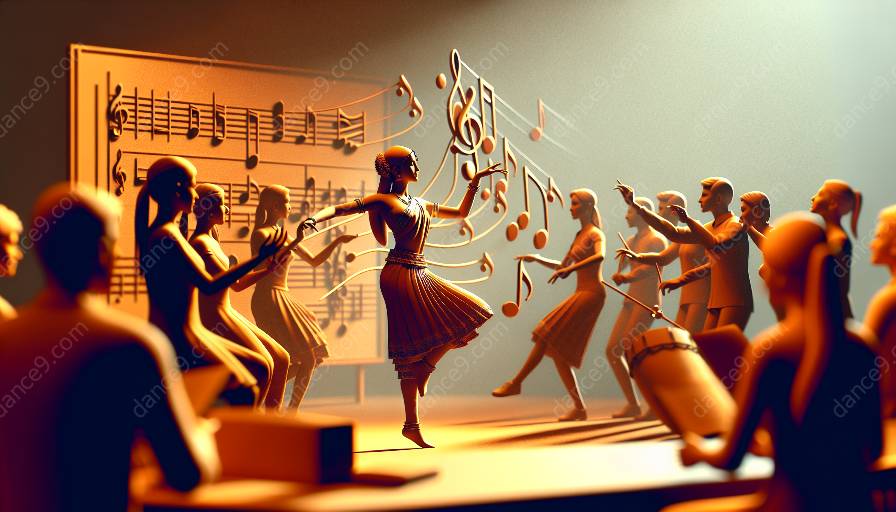Dance and music have a unique relationship, with tempo and meter playing a crucial role in shaping the dynamics of dance movements. Understanding how these elements influence each other is vital in dance studies.
Tempo and Meter in Music
Tempo refers to the speed at which a piece of music is played, and it is typically measured in beats per minute. Meter, on the other hand, refers to the arrangement of strong and weak beats in a musical composition, such as 4/4, 3/4, or 6/8 time signatures. Both tempo and meter provide the rhythmic framework for music, and they directly impact the way dancers interpret and execute their movements.
Impact on Dance Movements
The tempo and meter of a musical piece significantly influence the dynamics of dance movements. A fast tempo with a lively beat may inspire rapid, energetic movements, while a slower tempo with a more deliberate meter may result in graceful, flowing motions. Dancers often use the rhythm provided by the music to guide their steps and gestures, and the interplay between tempo and meter can create a diverse range of expressions in dance.
Expressive Possibilities
The relationship between tempo, meter, and dance opens up a world of expressive possibilities. Different tempos can evoke varied emotions and moods, leading to a wide array of choreographic interpretations. For example, a quick-paced, upbeat tempo might prompt lively, exuberant movements, while a moderate tempo could inspire more contemplative and introspective dance sequences. Similarly, the meter of the music can influence the structure and pacing of the choreography, shaping the overall narrative of the dance piece.
Syncopation and Rhythmic Play
Syncopation, or the emphasis of offbeat rhythms, adds a layer of complexity to dance movements. Dancers often explore syncopated rhythms within the context of different tempos and meters, integrating unexpected accents into their choreography. This rhythmic play creates dynamic and engaging performances, showcasing the intricate relationship between music and dance.
Training and Adaptation
Dancers undergo extensive training to develop an acute understanding of tempo and meter. They learn to internalize the rhythmic structures of music and adapt their movements to seamlessly integrate with the musical composition. This requires a heightened sense of musicality, as dancers must embody the nuances of tempo and meter in their physical expressions.
Interdisciplinary Collaboration
The study of tempo, meter, and their impact on dance movements underscores the interdisciplinary nature of dance. It encourages collaboration between dancers, choreographers, and musicians, fostering a deeper appreciation for the symbiotic relationship between music and dance.
Conclusion
The interplay of tempo and meter with dance movements is a rich area of exploration in dance studies. Understanding how these musical elements influence the dynamics and expression of dance not only enhances the artistic quality of performances but also deepens our appreciation for the interconnectedness of music and movement.

















